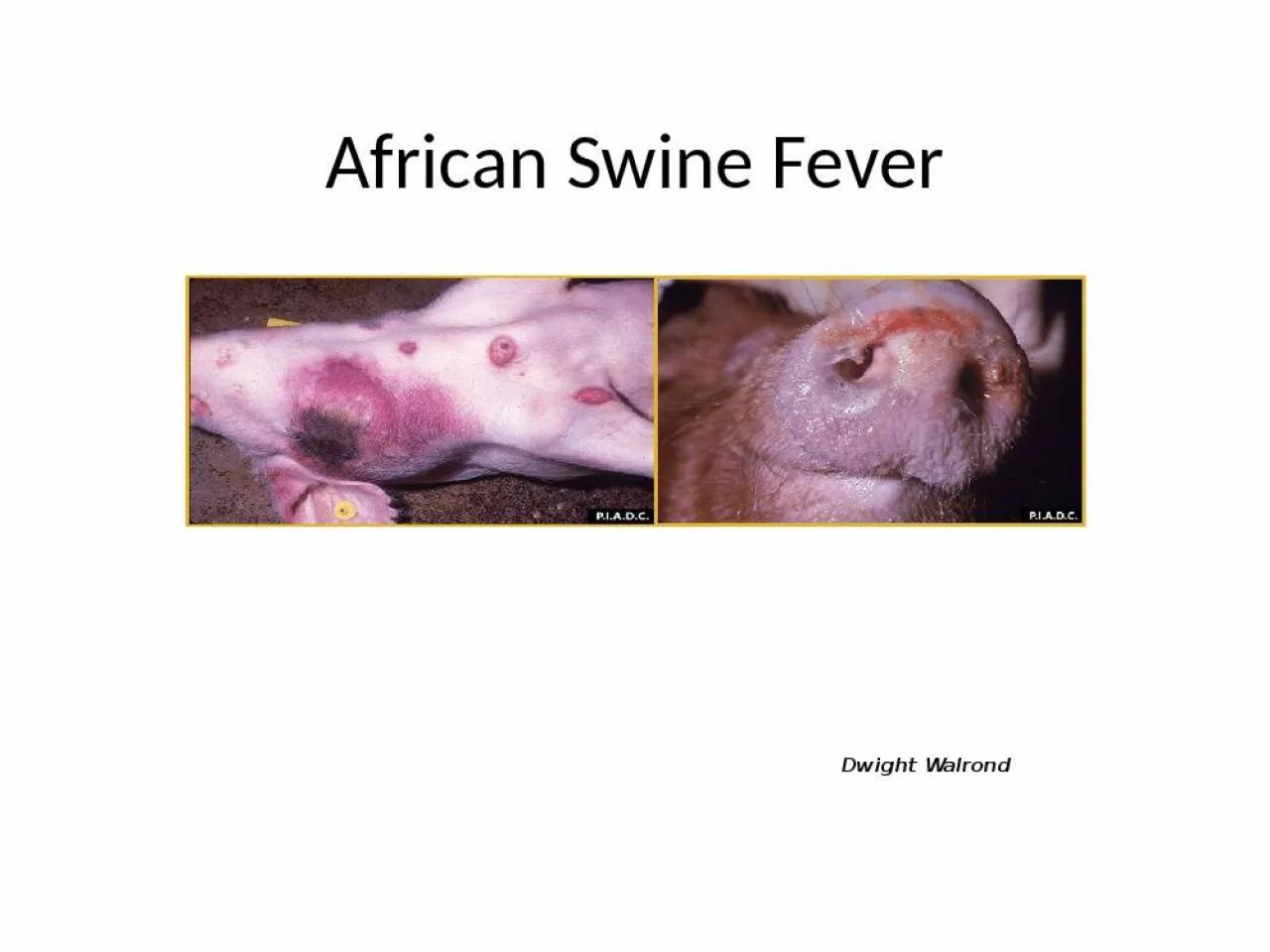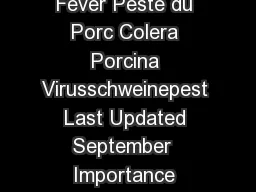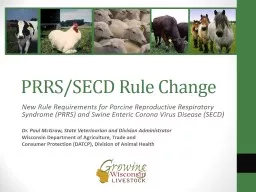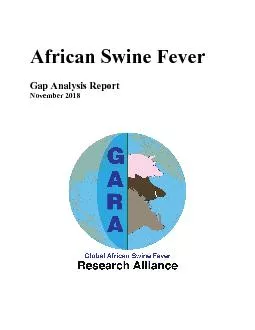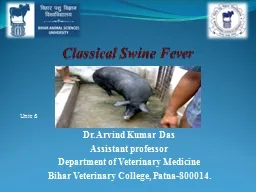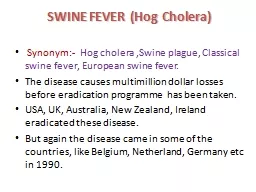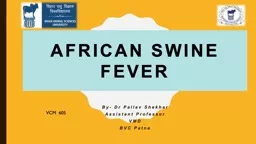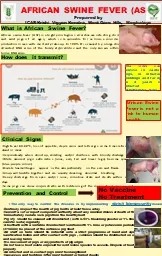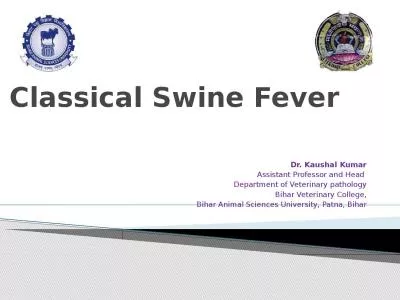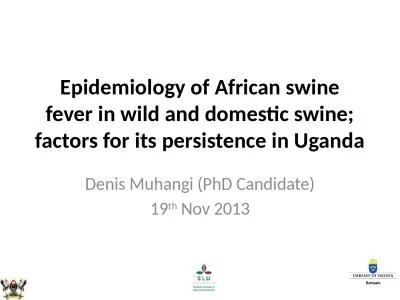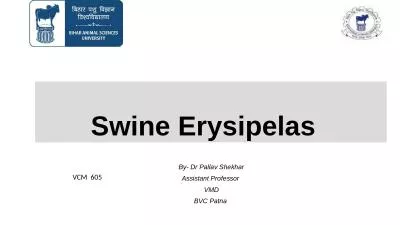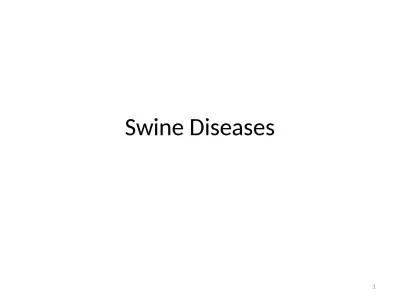PPT-African Swine Fever
Author : martin | Published Date : 2022-02-12
Walrond Overview Organism Economic Impact Epidemiology Transmission Prevention Actions to Take Species Affected Domestic pigs Feral swine Wild pigs Eurasian wild
Presentation Embed Code
Download Presentation
Download Presentation The PPT/PDF document "African Swine Fever" is the property of its rightful owner. Permission is granted to download and print the materials on this website for personal, non-commercial use only, and to display it on your personal computer provided you do not modify the materials and that you retain all copyright notices contained in the materials. By downloading content from our website, you accept the terms of this agreement.
African Swine Fever: Transcript
Download Rules Of Document
"African Swine Fever"The content belongs to its owner. You may download and print it for personal use, without modification, and keep all copyright notices. By downloading, you agree to these terms.
Related Documents

